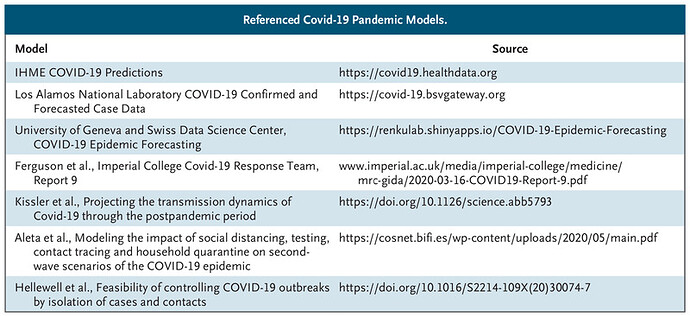(1.) What flaws are you referring to?
Here goes. First, Ph.D. input - from two:
(https://www.heritage.org/staff/kevin-d-dayaratna)
Per his 18 May 20 Heritage Foundation article, [Dr. Dayaratna] mentions " that he asked (Dr.) Ferguson and his colleagues for their model on multiple occasions to see how they got their numbers, but they never replied to my emails."
So he and a colleague made forecasts using a publicly available COVID-19 epidemiological model. His concerns are outlined in the article:
…The Imperial College code provides different answers using the same inputs. In particular, the same assumptions can provide results that differ by 80,000 deaths over a span of 80 days…
…It is fundamentally important for models used in policy to be made publicly available, have assumptions clearly stated, and have their robustness to changes to these assumptions tested. Models also need to be updated as time goes on in line with the best available evidence.
Bottom line: The Imperial College model didn’t meet any of these criteria. And sadly, its model was one of the inputs relied on as the basis for locking down two countries…
(The Heritage article provides links to the codes and assumptions used by Dr. Dayaratna, along with a link to Dr. Ferguson’s paper.)
In his 29 Apr 20 Daily Wire interview, Professor Johan Giesecke echoed some of the same concerns. Dr. Giesecke was the State Epidemiologist for Sweden between 1995 to 2005, then served as the first Chief Scientist of the European Centre for Disease Prevention and Control (ECDC).
I think it’s not very good, and the thing that they miss a little is that any models for infectious diseases —they’re very popular, many people do them — they’re good for teaching, they seldom tell you the truth because — I make a small parenthesis — which model could have assumed that the outbreak would start in northern Italy, in Europe, Difficult to model that one…
The paper was never published scientifically;
it’s not peer-reviewed, which a scientific paper should be;
it’s just an internal departmental report from Imperial.
And it’s fascinating; I don’t think any other scientific endeavor has made such an impression on the world as that rather debatable paper…
There is more, so…
(1.) What flaws are you referring to? (to be cont.)
Best regards,
Snuff
